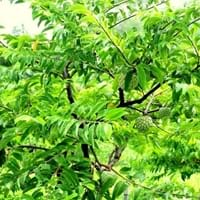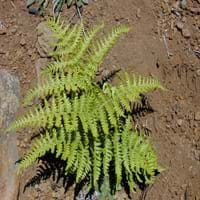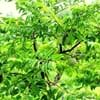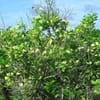Life Span
Perennial
Perennial
Origin
Caribbean, South America
World, Pandemic
Types
Pinks Mammoth, African Pride, Late Gold, Geffner, Hilary White
Pteridium arachnoideum, Pteridium caudatum, Pteridium centrali-africanum
Number of Varieties
Not Available
Habitat
Warm and moist climatic conditions
meadows, Shady Edge, Woodland Garden Dappled Shade
USDA Hardiness Zone
10-13
3-12
Sunset Zone
Not Available
1a, 1b, 2a, 2b, 3a, 3b, 4, 5, 6, 7, 8, 9, 10, 14, 15, 16, 17, 18, 19, 20, 21, 22, 23, 24
Habit
Upright/Erect
Thicket/Colonizing
Flower Color
Yellow green
Not Available
Flower Color Modifier
Bicolor
Bicolor
Fruit Color
Light Green, Sea Green
Brown
Leaf Color in Spring
Light Green
Light Green, Lime Green
Leaf Color in Summer
Light Green
Green
Leaf Color in Fall
Light Green
Yellow, Gold, Brown
Leaf Color in Winter
Light Green
Not Available
Leaf Shape
oblong or narrow-lanceolate
Pinnate
Plant Season
Summer
Spring, Summer, Fall
Sunlight
Full Sun, Partial Sun
Full Sun
Type of Soil
Loam, Sand
Loam, Sand
The pH of Soil
Acidic, Neutral, Alkaline
Acidic, Neutral
Soil Drainage
Well drained
Well drained
Bloom Time
Early Summer, Summer
Not Available
Tolerances
Drought
Not Available
Where to Plant?
Container
Ground
How to Plant?
Seedlings
Divison, Spores
Plant Maintenance
Medium
Medium
Watering Requirements
Do Not over Water, Does not require regular watering
Average Water Needs, Medium
In Summer
Lots of watering
Lots of watering
In Spring
Moderate
Moderate
In Winter
Average Water
Average Water
Soil pH
Acidic, Neutral, Alkaline
Acidic, Neutral
Soil Type
Loam, Sand
Loam, Sand
Soil Drainage Capacity
Well drained
Well drained
Sun Exposure
Full Sun, Partial Sun
Full Sun
Pruning
Prune young trees into an open vase shape
Remove damaged leaves, Remove dead branches, Remove dead leaves, Remove dead or diseased plant parts
Fertilizers
Nitrogen
All-Purpose Liquid Fertilizer
Pests and Diseases
Anthracnose, Diplodia rot, Leaf spot
Red blotch
Plant Tolerance
Drought
Not Available
Flower Petal Number
Single
Single
Foliage Texture
Medium
Medium
Foliage Sheen
Matte
Matte
Attracts
Fruit Bats
Insects
Allergy
Oral Allergy
Carcinogenic, Stomach cancers
Aesthetic Uses
Not Used For Aesthetic Purpose
Not Used For Aesthetic Purpose
Beauty Benefits
Promotes Healthy Hair, Promotes healthy skin
Good for skin
Environmental Uses
Air purification
Air purification
Medicinal Uses
Diabetes, Diarrhea
Anthelmintic, Antiemetic, Antiseptic, Diuretic, Poultice, Refrigerant, Tonic
Part of Plant Used
Bark, Fruits, Seeds
Leaves, Root
Other Uses
Used to make hair tonic, Used to promote healthy blood flow during menstruation
Adhesive, Basketary, Used as a dye, Used for making soaps, Used in biomass
Used As Indoor Plant
No
No
Used As Outdoor Plant
Yes
Yes
Garden Design
Fruit / Fruit Tree, Shade Trees, Tropical
Groundcover
Botanical Name
ANNONA squamosa
PTERIDIUM aquilinum
Common Name
Sugar Apple
Bracken, Western brackenfern, Decomposition brackenfern, Hairy brackenfern
In Hindi
सीताफल
Bracken Fern Plant
In German
Zuckerapfel
Bracken Fern Pflanze
In French
Sugar Apple
Bracken Fern Plante
In Spanish
Manzana de azúcar
Planta de helecho
In Greek
ζάχαρη της Apple
Bracken Fern Plant
In Portuguese
Pinha
Bracken Planta Fern
In Polish
Cukier Jabłko
Bracken Fern roślin
In Latin
Sugar Apple
Pteridium aquilinum Planta
Phylum
Magnoliophyta
Pteridophyta
Class
Magnoliopsida
Filicopsida
Order
Magnoliales
Polypodiales
Family
Annonaceae
Dennstaedtiaceae
Genus
Annona
Pteridium Gleditsch
Clade
Angiosperms, Magnoliids
Not Available
Tribe
Abreae
Not Available
Subfamily
Maloideae
Not Available
Number of Species
Not Available
Not Available
Season and Care of Sugar Apple and Bracken Fern
Season and care of Sugar Apple and Bracken Fern is important to know. While considering everything about Sugar Apple and Bracken Fern Care, growing season is an essential factor. Sugar Apple season is Summer and Bracken Fern season is Summer. The type of soil for Sugar Apple is Loam, Sand and for Bracken Fern is Loam, Sand while the PH of soil for Sugar Apple is Acidic, Neutral, Alkaline and for Bracken Fern is Acidic, Neutral.
Sugar Apple and Bracken Fern Physical Information
Sugar Apple and Bracken Fern physical information is very important for comparison. Sugar Apple height is 460.00 cm and width 610.00 cm whereas Bracken Fern height is 60.96 cm and width 91.44 cm. The color specification of Sugar Apple and Bracken Fern are as follows:
Sugar Apple flower color: Yellow green
Sugar Apple leaf color: Light Green
Bracken Fern flower color: Not Available
- Bracken Fern leaf color: Light Green and Lime Green
Care of Sugar Apple and Bracken Fern
Care of Sugar Apple and Bracken Fern include pruning, fertilizers, watering etc. Sugar Apple pruning is done Prune young trees into an open vase shape and Bracken Fern pruning is done Remove damaged leaves, Remove dead branches, Remove dead leaves and Remove dead or diseased plant parts. In summer Sugar Apple needs Lots of watering and in winter, it needs Average Water. Whereas, in summer Bracken Fern needs Lots of watering and in winter, it needs Average Water.





